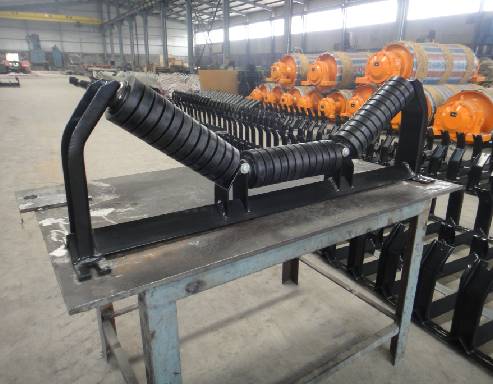 Afrikaans
Afrikaans  Albanian
Albanian  Amharic
Amharic  Arabic
Arabic  Armenian
Armenian  Azerbaijani
Azerbaijani  Basque
Basque  Belarusian
Belarusian  Bengali
Bengali  Bosnian
Bosnian  Bulgarian
Bulgarian  Catalan
Catalan  Cebuano
Cebuano  Corsican
Corsican  Croatian
Croatian  Czech
Czech  Danish
Danish  Dutch
Dutch  English
English  Esperanto
Esperanto  Estonian
Estonian  Finnish
Finnish  French
French  Frisian
Frisian  Galician
Galician  Georgian
Georgian  German
German  Greek
Greek  Gujarati
Gujarati  Haitian Creole
Haitian Creole  hausa
hausa  hawaiian
hawaiian  Hebrew
Hebrew  Hindi
Hindi  Miao
Miao  Hungarian
Hungarian  Icelandic
Icelandic  igbo
igbo  Indonesian
Indonesian  irish
irish  Italian
Italian  Japanese
Japanese  Javanese
Javanese  Kannada
Kannada  kazakh
kazakh  Khmer
Khmer  Rwandese
Rwandese  Korean
Korean  Kurdish
Kurdish  Kyrgyz
Kyrgyz  Lao
Lao  Latin
Latin  Latvian
Latvian  Lithuanian
Lithuanian  Luxembourgish
Luxembourgish  Macedonian
Macedonian  Malgashi
Malgashi  Malay
Malay  Malayalam
Malayalam  Maltese
Maltese  Maori
Maori  Marathi
Marathi  Mongolian
Mongolian  Myanmar
Myanmar  Nepali
Nepali  Norwegian
Norwegian  Norwegian
Norwegian  Occitan
Occitan  Pashto
Pashto  Persian
Persian  Polish
Polish  Portuguese
Portuguese  Punjabi
Punjabi  Romanian
Romanian  Russian
Russian  Samoan
Samoan  Scottish Gaelic
Scottish Gaelic  Serbian
Serbian  Sesotho
Sesotho  Shona
Shona  Sindhi
Sindhi  Sinhala
Sinhala  Slovak
Slovak  Slovenian
Slovenian  Somali
Somali  Spanish
Spanish  Sundanese
Sundanese  Swahili
Swahili  Swedish
Swedish  Tagalog
Tagalog  Tajik
Tajik  Tamil
Tamil  Tatar
Tatar  Telugu
Telugu  Thai
Thai  Turkish
Turkish  Turkmen
Turkmen  Ukrainian
Ukrainian  Urdu
Urdu  Uighur
Uighur  Uzbek
Uzbek  Vietnamese
Vietnamese  Welsh
Welsh  Bantu
Bantu  Yiddish
Yiddish  Yoruba
Yoruba  Zulu
Zulu belt training idlers
The Importance of Belt Training Idlers in Conveyor Systems
Belt training idlers play a crucial role in the efficient operation of conveyor systems. These specialized components are designed to ensure that the conveyor belt remains aligned and centered during its movement, which is essential for maintaining productivity and reducing wear on both the belt and the conveyor hardware.
Conveyor systems are widely used across various industries, including mining, agriculture, manufacturing, and logistics. The performance of these systems depends significantly on the reliability of the components that make them up. One of the key challenges in conveyor operation is belt misalignment. When a belt runs off-center, it can lead to several problems such as increased friction, uneven wear, and in severe cases, complete system failure. This is where belt training idlers come into play.
Belt training idlers, also known as training rollers or guide rollers, are strategically positioned along the conveyor system. They work by applying a gentle force to the belt, guiding it back to its intended path. There are different designs of belt training idlers, including adjustable models that can be fine-tuned to achieve optimal alignment. These idlers are usually equipped with a rubber or polyurethane surface that offers traction while minimizing wear on the conveyor belt.
belt training idlers

Employing belt training idlers leads to several benefits. Firstly, by keeping the belt aligned, these components significantly reduce material spillage. This is particularly important in industries that transport bulk materials, as spillage can lead to environmental concerns and increased clean-up costs. Secondly, proper belt alignment minimizes the risk of equipment failure. Misalignment can cause abnormal stress on the rollers and bearings, potentially leading to premature wear or even catastrophic breakdowns. By integrating belt training idlers into the system, operators can extend the lifespan of their conveyor systems.
Additionally, using training idlers contributes to energy efficiency. When a conveyor belt is properly aligned, it requires less power to operate, resulting in lower energy costs. In an era where sustainability and cost-effectiveness are of paramount importance, optimizing energy consumption through better system design is an advantage that cannot be overlooked.
Nonetheless, regular maintenance and monitoring of belt training idlers are essential. Operators should periodically check the condition of these components, looking for wear and tear that could impair functionality. Implementing a proactive maintenance schedule can help identify issues before they develop into more significant problems, ensuring the smooth operation of conveyor systems.
In conclusion, belt training idlers are vital components that contribute to the efficiency, reliability, and longevity of conveyor systems. By investing in high-quality idlers and maintaining them properly, businesses can enhance their operational performance and achieve significant cost savings. As industries continue to evolve and seek improvements, the role of belt training idlers will remain indispensable in the design and maintenance of effective conveyor systems.
-
Revolutionizing Conveyor Reliability with Advanced Rubber Lagging PulleysNewsJul.22,2025
-
Powering Precision and Durability with Expert Manufacturers of Conveyor ComponentsNewsJul.22,2025
-
Optimizing Conveyor Systems with Advanced Conveyor AccessoriesNewsJul.22,2025
-
Maximize Conveyor Efficiency with Quality Conveyor Idler PulleysNewsJul.22,2025
-
Future-Proof Your Conveyor System with High-Performance Polyurethane RollerNewsJul.22,2025
-
Driving Efficiency Forward with Quality Idlers and RollersNewsJul.22,2025





























